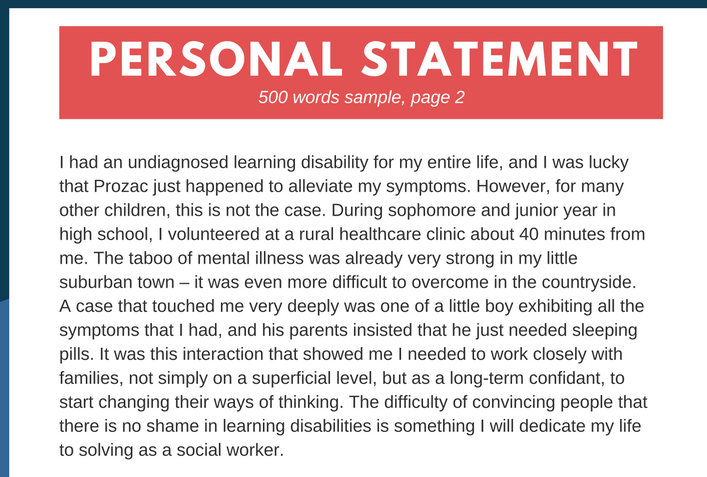Writing a personal statement for a scholarship can feel overwhelming, but it’s a vital step in securing financial aid for your education. This statement is your chance to showcase your strengths, experiences, and ambitions, setting you apart from other applicants. It’s not just about listing achievements; it’s about telling your unique story in a way that resonates with the scholarship committee.
Crafting a compelling personal statement requires careful thought and planning. You need to reflect on your journey, goals, and what makes you a deserving candidate. In this guide, we’ll break down the process into manageable steps, offering practical advice to help you write a statement that is both powerful and persuasive. Whether you’re applying for a local grant or a prestigious national scholarship, these tips will guide you in creating a statement that leaves a lasting impression.
What is the Purpose of a Personal Statement?
A personal statement is a document that serves as a narrative that connects your past experiences, present actions, and future aspirations. It’s more than just an essay—it’s your opportunity to communicate your passion, dedication, and potential to those who will decide whether to fund your education.
Scholarship committees use personal statements to gauge your character, motivation, and suitability for the award. They want to see not only what you have achieved but also how those experiences have shaped you and how they align with the goals of the scholarship. A well-written personal statement can make the difference between being a finalist and winning the scholarship or being passed over.
Reflecting on Your Personal and Academic Journey
Start by reflecting on your personal and academic journey. Consider the experiences that have been most significant in shaping who you are today. What challenges have you overcome? What achievements are you most proud of? How have your experiences influenced your academic and career goals?
Make a list of these key experiences and think about how they relate to the scholarship you are applying for. For example, if the scholarship is focused on community service, highlight your volunteer work and how it has impacted your life and those around you. If it’s an academic scholarship, focus on your educational achievements and how they have prepared you for your future goals.
Crafting a Strong Opening
The opening of your personal statement is crucial—it’s your chance to grab the reader’s attention and set the tone for the rest of your essay. Start with a compelling story, a surprising fact, or a powerful quote that reflects your values and aspirations. Your opening should be engaging and provide a glimpse into what makes you unique.
Avoid clichés and generic statements like “I’ve always wanted to help others” or “Education is important to me.” Instead, be specific and personal. For example, you might start with a story about a defining moment in your life that led you to pursue your chosen field of study.
Structuring Your Statement
A well-structured personal statement is easier to read and more effective in conveying your message. Organize your statement into clear sections: introduction, body, and conclusion.
- Introduction: As mentioned, your introduction should grab attention and set the stage for your story.
- Body: In the body of your statement, dive into the details of your experiences, achievements, and goals. This is where you connect your past with your future and explain why you are a strong candidate for the scholarship. Use specific examples to illustrate your points.
- Conclusion: Conclude with a strong statement that ties everything together. Reiterate your goals and how the scholarship will help you achieve them. End on a positive note, leaving the reader with a lasting impression of your determination and potential.
Showcasing Your Achievements and Strengths
When discussing your achievements, it’s important to do so in a way that highlights your strengths without sounding boastful. Focus on the impact of your accomplishments rather than just listing them. For instance, instead of simply stating that you were the president of a student organization, explain how your leadership led to significant positive changes within the group or the community.
Balance your achievements with reflections on the challenges you’ve faced and how you’ve overcome them. This shows resilience and growth, qualities that scholarship committees value highly.
Aligning Your Goals with the Scholarship’s Mission
Scholarship committees want to see that your goals align with the mission of their scholarship. Research the scholarship’s objectives and values, and make sure to address them in your personal statement. Explain how receiving this scholarship will help you achieve your goals and contribute to the community or field that the scholarship supports.
For example, if you’re applying for a scholarship aimed at future educators, discuss your passion for teaching and how you plan to make a difference in the education system. Show that you are not only a good fit for the scholarship but also that the scholarship is a good fit for you.
Writing with Clarity and Precision
Clarity and precision are key when writing your personal statement. Use simple, straightforward language to communicate your ideas. Avoid jargon, complex sentences, and unnecessary words. Each sentence should serve a purpose and contribute to the overall narrative.
Proofread your statement multiple times to catch any grammatical errors or awkward phrasing. Consider asking a teacher, mentor, or friend to review your statement as well. They can provide valuable feedback and help you identify areas where your message may not be as clear as it could be.
Conveying Your Passion and Personality
A personal statement should be just that—personal. Let your passion and personality shine through in your writing. Be authentic and honest about your experiences and aspirations. Don’t be afraid to show emotion or share personal stories that have shaped who you are.
At the same time, maintain a professional tone. While it’s important to be yourself, remember that you are applying for a scholarship, so your writing should reflect maturity and seriousness of purpose.
Tailoring Your Statement to Each Scholarship
One size does not fit all when it comes to personal statements. Tailor your statement to each scholarship you apply for. This means adjusting your focus to align with the specific values and goals of each scholarship. While you can use similar content across applications, make sure to customize your introduction, conclusion, and any sections that directly address the scholarship’s mission.
This extra effort shows the committee that you’ve taken the time to understand what they are looking for in a candidate and that you are genuinely interested in their specific scholarship.
Avoiding Common Pitfalls
There are several common mistakes that applicants make when writing personal statements. Here are some to avoid:
- Being too generic: Your statement should be unique to you. Avoid using clichés or general statements that could apply to anyone.
- Failing to answer the prompt: Some scholarships provide specific prompts or questions. Make sure you address these directly in your statement.
- Overusing quotes: While a well-placed quote can be effective, your personal statement should focus on your own words and experiences.
- Neglecting to proofread: Typos and grammatical errors can leave a bad impression. Always proofread carefully.
- Exceeding the word limit: Stick to the word limit provided by the scholarship. Going over can make you appear disrespectful of their guidelines.
Finalizing Your Personal Statement
Once you’ve written your personal statement, take some time to review and refine it. Read it aloud to catch any awkward phrasing or errors you might have missed. Ensure that your statement flows smoothly and that each section connects logically to the next.
Consider getting feedback from others, such as teachers, mentors, or peers. They can provide valuable insights and help you identify areas for improvement. Finally, make sure you have followed all instructions provided by the scholarship committee, including formatting and submission guidelines.
Conclusion
Writing a compelling personal statement for scholarships is a process that requires reflection, planning, and careful writing. By following the steps outlined in this guide, you can craft a statement that effectively communicates your strengths, achievements, and aspirations. Remember, this is your chance to tell your story and make a strong case for why you deserve the scholarship. With clarity, authenticity, and attention to detail, you can create a personal statement that stands out and increases your chances of success.
Good luck, and remember that every word you write brings you one step closer to achieving your educational goals!



